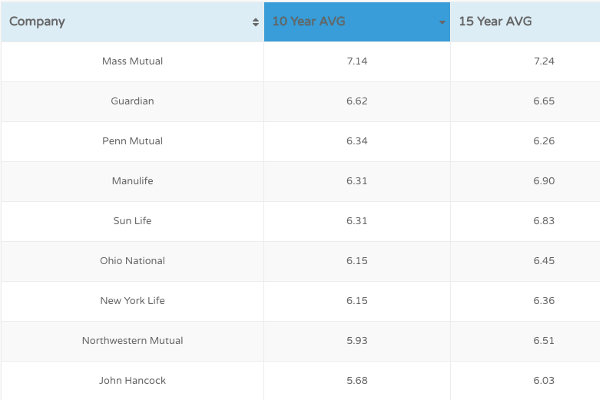Mortgage debt in the United States has reached a whopping $9.71 trillion in the first quarter of 2020. That reflects a staggering $155 billion increase from the previous three quarters.
The thing is, the current health crisis has made it difficult for many borrowers to pay off their debts. So much so that by May 2020, the mortgage delinquency rate has risen to an astonishing 7.76%.
This is one of the many times wherein having mortgage life insurance is quite beneficial.
What exactly is this type of life insurance, though? What are its pros and cons, and should you buy one yourself?
We'll get to the bottom of this below, so be sure to stick around!
1. Mortgage Life Insurance in Less Than 50 Words
You may know mortgage life insurance (MLI) as "mortgage protection life insurance" (MPLI). Some insurance companies also sell these policies under the name of "mortgage protection." Either way, it's a policy that pays off the remainder of your mortgage debt in case of your passing.
2. The Recipient of the Policy's Death Benefits
With mortgage life insurance, the named beneficiary is the actual mortgage lender. That's the entity that you borrowed money from to purchase your home.
Let's say you took out a mortgage loan from ABC Bank. If you die before you've paid off your mortgage, your insurer will take over your debt repayment.
3. How Mortgage Protection Life Insurance Works
Most people who purchase mortgage life insurance do so when they buy their home or right after. Like term life insurance, mortgage protection life insurance also has a specified term. After all, once you've paid off your mortgage debt, you won't need the policy any longer.
The "term" of most mortgage life insurance policies are the same as the term of the actual mortgage. For example, if you took out a 30-year fixed-term mortgage, your insurance will also cover you for 30 years.
Note that mortgage protection life insurance is different from private mortgage insurance (PMI). A PMI is usually a requirement for mortgage borrowers who don't or can't put down 20% on their home purchase. Mortgage life insurance, on the other hand, is not a mandatory type of coverage.
4. Why Buying Mortgage Protection Makes Sense
The primary benefit of MLI is that it will let your loved ones keep living in the same home if you pass away. Your policy will cover your full mortgage balance, so there's no risk of foreclosure.
Note that even before the pandemic, foreclosures have been occurring in the thousands. An October 2019 study, for example, showed 55,197 properties with foreclosure filings.
True, your mortgage debt won't "pass on" to the loved ones you may leave behind. The law won't hold them legally responsible for paying back the lender whom you still owe money to. However, if your family wants to stay in that mortgaged home, then they would need to keep paying back your debt.
An MLPI policy can provide a safety net to prevent your loved ones from losing a roof above their heads. Losing you would be devastating enough, but it can be so much worse if they lose the home too.
5. The Key Features of MLI
One of the top features of mortgage life insurance is that it usually doesn't require a medical exam. You will have to answer health questions, but you won't have to submit to a test. This makes it an ideal option if you have pre-existing health conditions.
Considering how 60% of US adults have a chronic health problem, it's likely that you have one, too. The thing is, such maladies can make or break your life insurance options.
Don't worry: you can still get life insurance even if your medical exam confirms you have a disorder. However, it will ultimately lead to higher premiums.
As such, life insurance that doesn't require medical examinations can be a good option.
Aside from having no medical tests, the premiums itself of an MLI policy usually don't go up over time. This feature can then make it easier for you to budget your monthly cash flows accordingly.
6. The Drawbacks
Paying down your home loan debt decreases your mortgage life insurance payout. Again, that's because the policy will take over your mortgage payments in case of your passing. So, as your mortgage decreases over time, so will your policy's amount of coverage.
However, despite the reduction in your mortgage debt, your insurance premiums won't change. You'll pay the same amount of money toward the policy until you've paid off your home loan lender.
Also, unlike whole life insurance, mortgage protection doesn't have a cash value component. Its primary purpose, after all, is to protect your loved ones from a sudden loss of funds to pay off your mortgage. This, in itself, is beneficial, as your family will have fewer financial woes to deal with after you die.
Other than paying off your mortgage debts, though, MPI doesn't cover anything else. The entire death benefit will go straight to your home loan lender. There would be no "leftover" funds that your family can use for other crucial expenses.
7. When MLI Coverage Alone Won't Cut It
If your household has other debts, such as balances on credit cards, MLI may not be enough. It's more than likely that you do have credit card debts, seeing as almost half of all US adults carry them.
It's also not a good idea to just have mortgage protection coverage if you still have young children. Since it will only relieve your family of your mortgage debt, there won't be anything left for your kids.
Explore Your Alternatives to Mortgage Protection Coverage Now
As you can see, mortgage life insurance has many pros and cons, but it may still not be enough for your family. If you have considerable savings, then yes, mortgage protection can be a good option. However, if you have other significant debts, then it's best to go with a policy that has a much bigger payout.
We here at Top Whole Life can help you explore all your best life insurance coverage options. We'll be happy to give you a free life insurance quote for a policy that would be more than enough for your family.




